2009 Porsche 911 Carrera S with PDK – Click above for high-res image gallery
Introduced in 1963, the Porsche 911 is one of the most successful competition cars ever built. Despite its unconventional rear-engine platform, the 911 Carrera holds recorded wins in nearly every type of automotive competition. Continuously upgraded and refined, Porsche has introduced a mid-cycle refresh for the 2009 model year. While the cosmetic changes are immediately apparent, the most significant improvements – two new engines and a new double-clutch transmission – are hidden under its sleek skin. We spent a long day putting the 2009 911 Carrera through its paces on a race track near Salt Lake City framed by the spectacular snow-capped surrounding mountains of Utah. Read our impressions after the jump.
Photos Copyright ©2008 Michael Harley / Weblogs, Inc.
With more than 40 years of lineage buried within its chassis, the current-generation of the venerable Porsche 911 Carrera continues the traditions initiated by its earliest predecessors. The engine is still a flat-6 "boxer" configuration, and it continues to hang out behind the rear axle. Although its now-famous "snap oversteer" has been tamed, the 911 continues to seduce enthusiasts who are drawn to its refined chassis and sporty character, yet docile daily-driver mannerisms. While Porsche offers blazing fast GT models such as the 911 Turbo, and race-ready high-performance derivatives like the GT3 and turbocharged GT2, we flew to Utah to sample the entry-level 2009 911 Carrera and its more powerful sibling, the 2009 911 Carrera S.
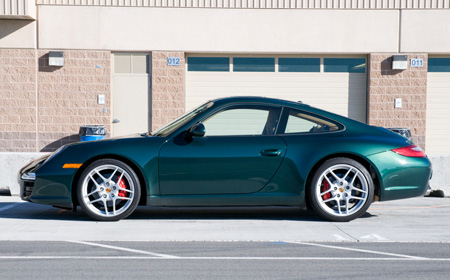
The current Porsche 911 is built on the "Type 997" platform. First introduced in 2005, Porsche has given the 2009 model a facelift both inside and out. New light-emitting-diode daytime running lights adorn the front bumper, just inches under the new swiveling Xenon headlamps. The rear lamps are also LED, continuing the "Audi-esque" theme. Inside, the NAV display has been revised with a touch-screen interface featuring fewer buttons while new Bluetooth and iPod connectivity integrate smartly within the comfortable cabin.
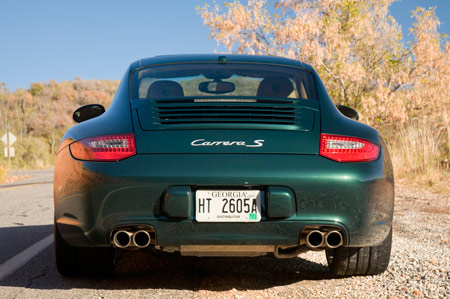
Last year, the standard 2008 Carrera offered a 3.6-liter (3596 cc) flat-6 rated at 325 hp and 273 lb-ft of torque. The Carrera S was fitted with a slightly more powerful 3.8-liter (3824 cc) flat-6 rated at 355 hp and 295 lb-ft. Still striving to perfect its unique 6-cylinder boxer, the German automaker burned the midnight oil to completely rework the powerplants for 2009 (don't be misled by the countless uninformed sources who attribute the bump in horsepower solely to the new direct injection). The essentially all-new engines feature direct fuel injection, two-piece crankcases, and revised intake and exhaust systems. Both engines also boast Porsche's VarioCam Plus intake-valve timing and lift system. Under the rear deck lid of the standard 2009 Carrera is a 3.6-liter (3614 cc) flat-6 now rated at 345 hp and 288 lb-ft, while the Carrera S receives a larger 3.8-liter (3800 cc) flat-6 rated at 385 hp and 310 lb-ft. Compared to their predecessors, the new engines also weigh about 13 pounds less. Despite their increased horsepower and torque, the LEV-II certified engines also deliver about 10 percent better fuel economy.
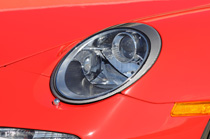
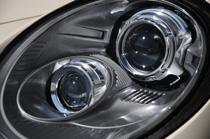
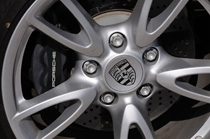
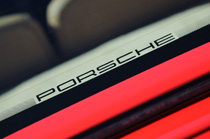
Connected to the front of the engine (that's where it goes in a rear-engine 911) is an all-new electronically-controlled double-clutch transmission. It's officially called the "Porsche-Doppelkupplungsgetriebe" (German for "double-clutch transmission"), but we'll stick with the acronym "PDK" for brevity. While it may seem that Porsche is the last to the game with a direct-shift gearbox, the automaker politely reminds everyone that it introduced the world's first PDK in the Porsche 956 in 1983, and won in the Supercup at Nürburgring in the PDK-equipped Porsche 962 the following year. The Tiptronic (a traditional slushbox) is now gone from the 911 lineup for 2009, completely replaced by the new PDK.
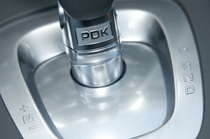
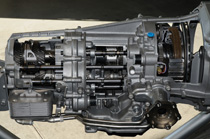
Technically speaking, the new PDK is a conventional 7-speed manual gearbox with two electronically-controlled clutch packs. One multi-plate clutch pack controls the odd gears (and reverse), and the other controls the even gears. As one clutch pack is engaged, the other disengages the previous gear and readies itself for the next shift (up or down). Gear selection is done manually via twin sliding levers on the steering wheel (push forward to upshift, pull back to downshift) or with the console-mounted shift lever. It can also be completely automatic as engine electronics shift gears based on engine speed, engine load and vehicle speed. The PDK in standard mode shifts smoother than the outgoing Tiptronic. However, when the console-mounted "Sport" button is depressed, the shifts are accelerated to outpace in speed and feel those of the even sportier Tiptronic S. In "Sport Plus" mode, shifts are blindingly fast – they include a swift kick in the back with each upshift (Porsche engineers realize that hundredths of a second count on the track or in an autocross, so they didn't want to leave anything on the table).
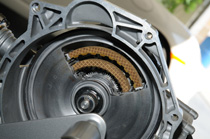
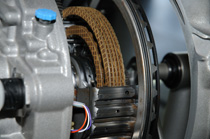
Introduced nearly 20 years ago, Tiptronic was at best an electronically controlled transmission with a torque-converter. At worst, it was a slow-shifting slushbox vehemently shunned by enthusiasts. In a complete reversal of trend, Porsche expects enthusiasts to prefer PDK over a traditional 6-speed manual transmission. Shake your head in disbelief, and then read on... First, the lightning-fast shifts with PDK best even the quickest manual or Tiptronic gear change (e.g., a 6th to 2nd shift took 1.05 sec with Tiptronic S – PDK drops it to just .42 sec). Second, there is no tractive-force interruption with PDK (no measurable loss of power to the pavement). Third, overall acceleration is quicker with PDK (Carrera S Coupe launches 0-60 mph in 4.5 sec with a manual, just 4.1 sec with PDK). Finally, PDK is absolutely consistent lap after lap. Few drivers, if any, can match that.
The new dual-clutch PDK leaves manual transmission junkies in the Dark Ages, and more than a bit miffed about the future of their century-old gearbox. Soccer moms will want the PDK for its smooth and seamless shifting, improved fuel economy, and reduced engine noise. Enthusiasts will choose the PDK for its shift speed, consistency, and lack of power loss to the wheels. Only passionate "traditionalists" who insist on three-pedal shifting for the sheer visceral enjoyment will choose the slower, less efficient, and more cumbersome 6-speed manual. Like the cranks on car windows being replaced by electric lifts, Porsche's dual-clutch spells doom for the manual transmission – regrettably PDK proves its days are ultimately numbered.
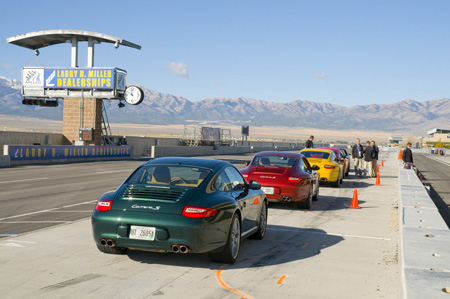
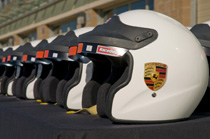
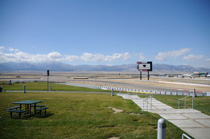
Our afternoon with the Porsche Carrera was spent at Miller Motorsports Park just out of Salt Lake City, Utah. Boasting the largest road course in North America, the 4.5-mile track features an impressive 3,500-foot-long main straight. Porsche had rented the whole place for us to try out its new 911. With a slew of '09s to test (Carrera 6-speed, Carrera PDK, Carrera S 6-speed, Carrera S PDK, Carrera Cabriolet PDK, etc...), we were all smiles as we tossed them around the road course for several hours. Although we drove all of the variants, we were amazed at the contrast between two of the cars: Carrera 6-speed and the Carrera S with PDK.
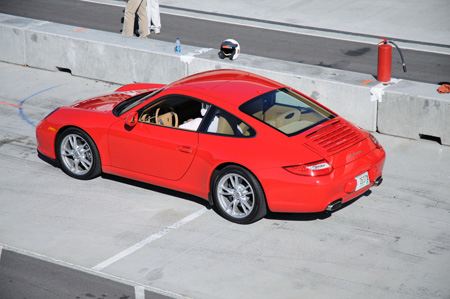
The standard Carrera 6-speed (in brilliant Guards Red) was one of the first cars we took out. It was lightly optioned and the sticker price was just below $82,000. On the track, the car was a blast to drive. The manual transmission was slick and easy to use, even if we were fumbling to learn each of the 24-turns on the circuit. At the limit, understeer was the rule and body roll was noticeable. Porsche generously bumped up the size of the brakes for 2009, and they were unflappable regardless of how sloppily we used them. The standard coupe was plenty quick around the track, but we would have preferred a firmer suspension to limit body roll under these conditions.
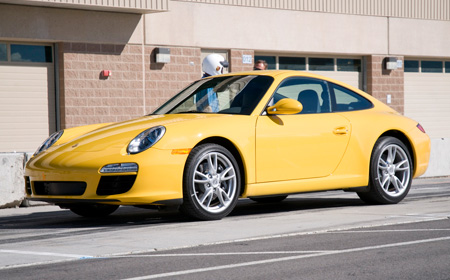
A not-so-slight bump in price then put us behind the wheel of a Carrera S with the optional dual-clutch transmission (our example stickered at about $107,000). The price included the PDK ($4,080) and Porsche's Active Stability Management (PASM) suspension. It was also equipped with the Sport Chrono Package adding an analog timer on the dash. More importantly, the Chrono Package electronically alters the engine mapping, throttle response and the stability control for a sportier driving experience when in "Sport" mode. New for 2009 is an additional "Sport Plus" mode with "Launch Control" and a new "motorsport-derived gearshift strategy" with shift times and engine speeds optimized for use on the racetrack. (Porsche took all of us out on the front straight to demonstrate repetitive Launch Control starts followed by nosebleed braking to a standstill from 125+ mph – and no, it doesn't void the warranty!)
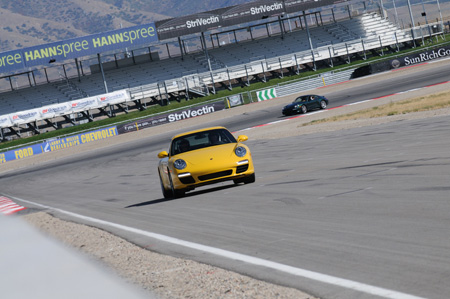
On the road circuit, the Carrera S with PDK was a whole different animal. While the PDK selector can be moved to "manual" mode, we found ourselves bouncing off redline/fuel cutoff coming out of the corners (PDK will not select the next gear in manual mode). We instead chose to leave PDK in Drive, the "Sport Plus" button activated, and the PASM in sport mode. In that configuration, you get brake-induced downshifts (or the driver can override them with the steering wheel controls) while the computer controls instantaneous upshifts coming out of the corners. With a lower ride height and PASM, the shock damping was much improved and the body roll tolerable. The track's two dozen corners were much less intimidating when each shift was performed flawlessly by PDK, and our lap times felt much faster. We took hot laps with skilled factory drivers Hurley Haywood, Patrick Longs, David Donahue, Kees Nierop and David Murry, and they also preferred to keep the selector in Drive. While Porsche was mum on the subject, we can't wait to sample the GT2 and GT3 with PDK (the transmission is compatible with the limited-slip differential).
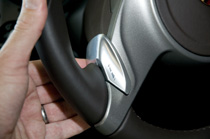
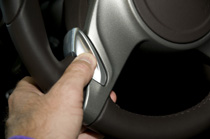
Let loose at the track and pointed back to the hotel, we took a circuitous route through a mountain pass before heading towards Park City. Around town, with the transmission in Drive and both sport buttons off, PDK jumps up through the gears in an exercise of efficiency. A slight increase in pressure on the throttle drops the gears optimally for passing. On the highway, the coupe is an effortless cruiser that must be restrained from triple-digits. In fact, the PDK gearing is so tall that 100 mph is only spinning the engine slightly more than 2,500 rpm (redline in 7th is geared something north of 250 mph – if it were plausible). There's a bit of tire roar in the cabin, but it's expected with wide 295 mm tires on the rear wheels. The seats are comfortable for our 6-foot 2-inch frame and outward visibility – always a strength of the Carrera – is excellent. While we toyed with the all-new iPod interface in the paddock, we enjoyed the muted sound from the engine on the road and kept the audio system off. Our new touch-screen NAV was disconnected, so we never had a chance to check it out.
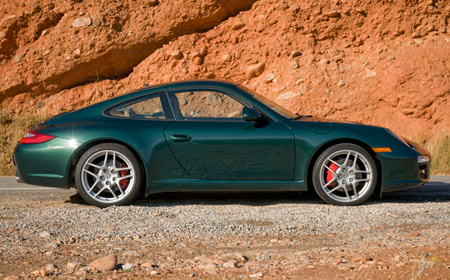
We left I-80 out of Salt Lake and headed up Utah State Route 65 through East Canyon State Park towards I-84. The two-lane road was smooth and lightly traveled as it disappeared into the mountains before dumping us on the other side of the pass. With the PDK in "Sport" mode, light throttle applications were met with instantaneous downshifts (sometimes skipping several gears) when we asked for more power. PDK was intuitive enough to hold the gears until we lifted off the throttle. Passing slower vehicles was easy as the transmission would drop the engine directly into the meat of its power band. We also tried the "Sport Plus" mode in the canyons. It automatically drops the PDK into a lower gear (locks out 7th) and intensifies the shift. It's tolerable, but not enjoyable when you aren't pushing the Carrera more than 7/10ths. With the road surface getting worse, we threw it back into "Sport" mode for the last hour of the drive and were very happy with the compromise.
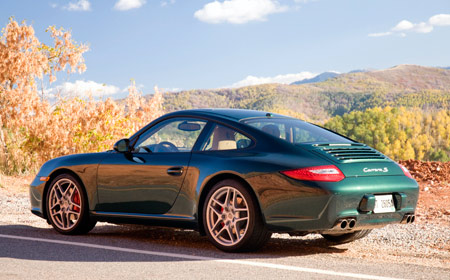
We've spent time with other dual-clutch transmissions, and Porsche's PDK seems to lead the pack in refinement – maybe it was a calculated move to arrive late to market. While the performance-oriented dual-clutch on the Nissan GT-R is very mechanical and abrupt in operation, and Volkswagen's DSG is economy-oriented, Porsche's PDK seems to offer the best of both worlds. It will masquerade as a smooth slushbox when requested, yet it snap necks when called to perform. While Porsche offers consumers some exciting changes to the 2009 Porsche 911 Carrera, our thoughts kept drifting back to the gearbox. Simple cosmetics and new engines be shunned, all are simply overshadowed by the excellent new PDK dual-clutch transmission.
Photos Copyright ©2008 Michael Harley / Weblogs, Inc.
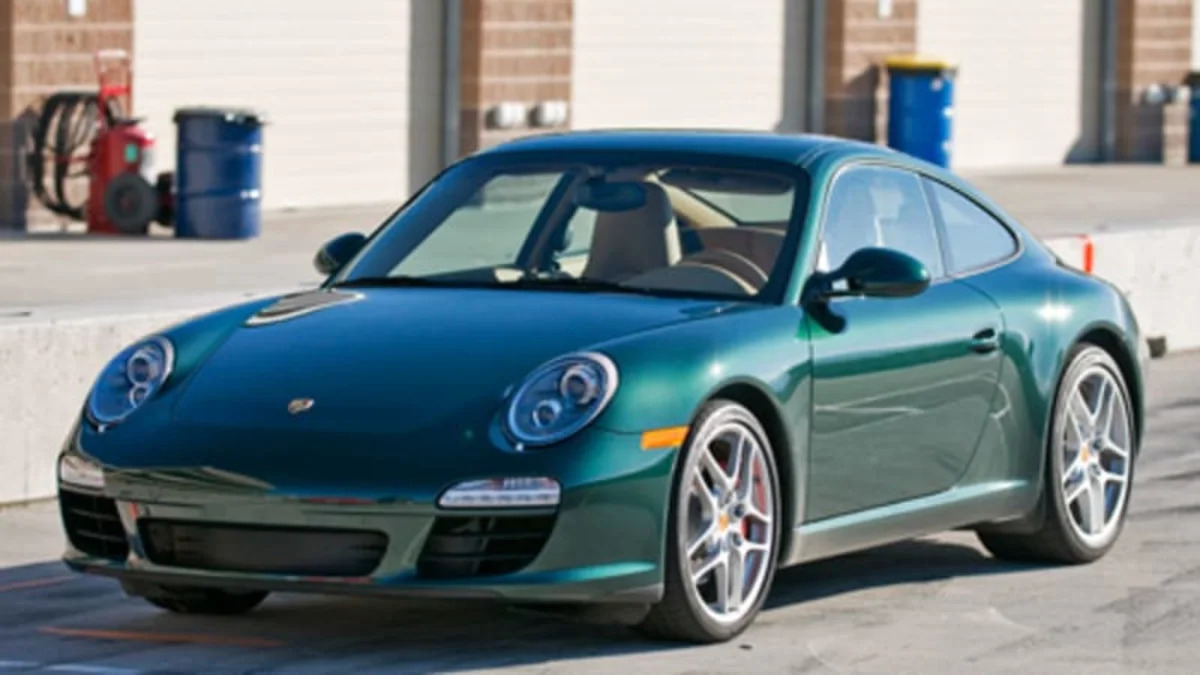
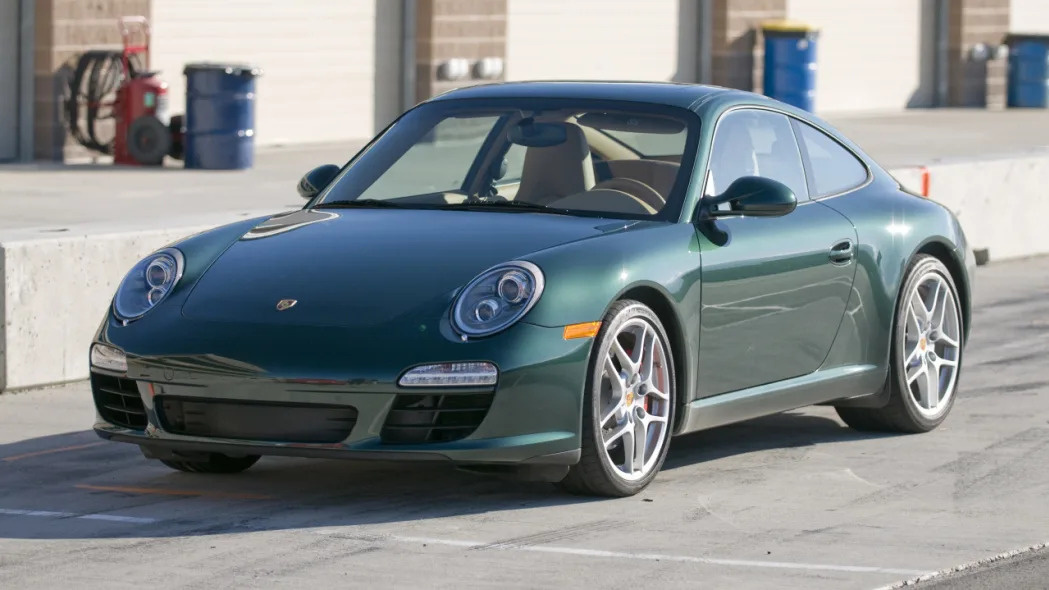

Sign in to post
Please sign in to leave a comment.
Continue